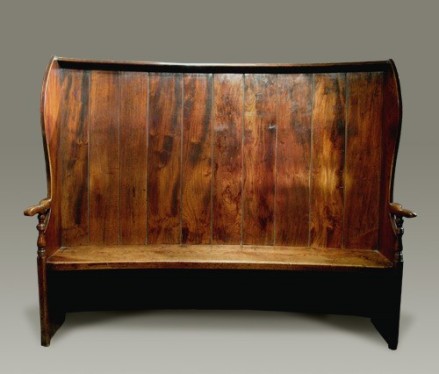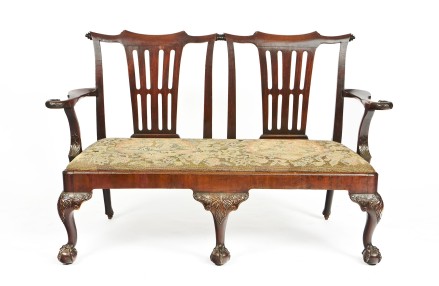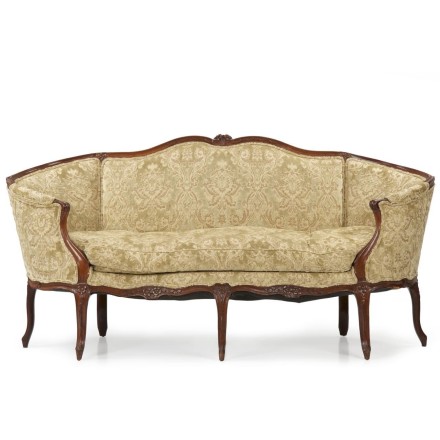Friday, January 20, 2017; Roughly 359 Hours to go per Subject this Year
What to Expect When You’re Expecting by Heidi Murkoff and Sharon Mazel –
Report: 28 pages
Reflection: After finishing The Psychology of the Child, I thought I would read What to Expect When You’re Expecting. After all, my ulterior motive for choosing this as one of my reading subjects, is to be ready for this next step in my life. A step that I can’t wait to take; but while I’m waiting, there are some other steps that I can take that will make the pregnancy step even easier.
The first chapter of the book is all about what you can do to prepare for pregnancy. The authors suggest having a female check-up, if you don’t normally already, to make sure that everything is in fact healthy and functioning the way that it should. I think this is good advice too because I’ve seen a lot of women concerned with “how long it is taking them to get pregnant”. Instead of thinking that it is actually taking normal amount of time, they immediately worry that something is wrong physically. If you have already had a check-up and, thus, know that everything is functioning properly, then I think you are less likely to jump to that worry.
It seems to me that since the invention of birth-control our society seems to think that if you aren’t using contraception then you will automatically get pregnant. This is a fallacy, and one that I think is propagated by the contraceptive companies to encourage use. While I have no issue with them doing this as it makes perfect marketing sense, I find it funny that people can’t seem to let go of the notion. Even when properly educated about how the female reproductive system works.
I think this is a big part of why many women think they should be getting pregnant faster than they are. They know in their brain that they are in fact not fertile every single day (and the book says that it takes a NORMAL woman an average of six months to get pregnant. Now, I think that has to do with what kind of birth-control you were previously using, however my point still stands); but they don’t then disregard the idea that if you aren’t using contraceptive, you WILL get pregnant.
They also suggested looking for a prenatal practitioner before conception, if possible.
The next suggestion surprised me, a dental visit. “A visit to the dentist before you get pregnant is almost as important as a visit to the doctor. That’s because your future pregnancy can affect your mouth – and your mouth can possibly affect your future pregnancy.” They go on to say that pregnancy hormones can really mess with your gums and teeth; aggravating existing problems.
In a similar vein, they mention looking into your family tree, i.e. what health problems might your children inherit? I’m not sure how I feel about this one…I mean, no matter what is or could be wrong with my baby, it is still my baby. I feel like this suggestion is a slippery slope, and I think we as a society have already seen the ugly bottom of that slope, aborting babies because they are not “normal”, or will not be able to live a “normal life”.
Of course, there is the argument that there are a lot of preventative or healing medical measures that can be taken during pregnancy, so not knowing is “irresponsible”. But I don’t think I agree with this either. There is that verse in the bible that talks about babies being made in secret. I think that was referring to the womb, and certainly any of these medical measures are invasive or require monitoring and I’m not sure that’s right.
They also suggest looking at your pregnancy history, if you have one. I think that falls in line with the doctor’s visit very nicely. After all, if you know you have had trouble in the past then obviously you need to know what’s happening with you physically before you try again.
The next suggestions are all doctor visit related: “Seek genetic screening…” (The aim is similar to when you look back into your family medical history, just more in depth). “Get Tested…Hemoglobin or hematocrit,…Rh factor,…Rubella titer,…Varicella titer,…Tuberculosis…Hepatitis B…Cytomegalovirus (CMV) antibodies,…Toxoplasmosis titer,…Thyroid function…Sexually transmitted diseases (STDs)…Get treated…Update your immunizations.”(Another controversial suggestion…I haven’t decided what I think.)
“Get chronic illnesses under control…Get ready to toss your birth control…Improve your diet…Take a prenatal vitamin. Even if you’re eating plenty of foods high in folic acid, it’s still recommended that you take a pregnancy supplement containing 400 mcg of the vitamin, preferably beginning two months before you try to conceive…Research indicates that women who take a daily multivitamin containing at least 10 mg of vitamin B6 before becoming pregnant or during the first weeks of pregnancy experience fewer episodes of vomiting and nausea during pregnancy. The supplement should also contain 15 mg of zinc, which may improve fertility…Get your weight in check. Being over-weight or very underweight not only reduces the chances of conception, but, if you do conceive, weight problems can increase the risk of pregnancy complications…Shape up [work out]…Check your medicine cabinet. Some…medications are considered unsafe for use during pregnancy…Cut back on caffeine…Cut down on alcohol…Quit smoking…Just say no to illegal drugs…Avoid unnecessary exposure to radiation…Avoid environmental hazards…Get fiscally fit…Work out those work issues. Find out everything you can about your work rights when pregnant…Start keeping track. Become familiar with your monthly cycle and learn the signs of ovulation…Give it time. Keep in mind that it takes an average of six months for a normal, healthy 25-year-old woman to conceive, and longer for women who are older…Relax…getting uptight about conception could prevent you from conceiving [also good advice because studies show that anxiety transmits to the baby through the umbilical cord, which is of course unhealthy; so you don’t want to be stressed while trying to conceive on the off chance that you do conceive and start spreading that anxiety hormone].
Chapter 2 was devoted to knowing if you were pregnant or not. I was most interested in the part about chemical pregnancies. I’d never heard of them before now. They are a type of miscarriage. What happens is the egg is fertilized but doesn’t fully implant in the uterus, causing the woman to miscarry. But the the thing is that these pregnancies were unheard of before the early accuracy home pregnancy tests. Because the pregnancy ends just as it starts there are not symptoms (outside of the added hormones in the bloodstream and urine), so women throughout history have had them and never known!
The book says that you can call your doctor as soon as you know you are pregnant, but it depends on the practice as to whether or not you get an appointment immediately. It said that it isn’t uncommon for a doctor not see an expectant mother until she is roughly 6 to 8 weeks along.
Then they gave a list of birthing options, i.e. all of the different professionals who can deliver your baby, and where and how they can deliver them. They talked about the different kinds of doctors, nurses, and midwifes, as well as birthing rooms, birthing centers, and home births. They also discussed Leboyer births which is a “theory of childbirth without violence”. Apparently parts his, Frederick Leboyer, theory are now fairly common practice; I’m very intrigued and want to learn more about it.
Saturday, January 21, 2017; 358 Hours to go per Subject this Year
Antiquing for Dummies by Ron Zoglin & Deborah Shouse –
Report: 14 pages read.
Reflection: Do you know how beer steins were invented? Evidently, way back when, bugs and gross things would fall into your beer as you were drinking it; so the German government made a health law stating that all mugs had to have lids. This was so that unhealthy things couldn’t get in. Too bad the Victorians didn’t grab hold of this idea, we could have had tea cups with lids…though maybe then it’s just a misappropriated sugar bowl…hmmm….
One of my favorite items from the reading today is the Tantalus. A tantalus is an elegant liquor bottle holder. But that’s not even the best part. THEY LOCK! And not only in a common way, “…many have their own unique ways of opening. Some have pullout or push-in pieces of wood or metal fittings that release…” Isn’t that great? I want one. Below are a few examples:
So we’ve all seen those little condiment caddies at restaurants, and some of people even have them at home. Those are actually called Caster Sets, and the antique ones are really lovely. I think we’ve found another item for the must-have list.
What to Expect When You’re Expecting by Heidi Murkoff and Sharon Mazel –
Report: 17 pages. I’m just not really into this book!
Reflection: This week the book talked a lot about pregnancy health and comfort. How normal and/or pleasant your pregnancy is, is largely dictated by factors that are outside of your control (i.e. genetic predisposition, etc.). However, that doesn’t mean that all of them (the factors) are. The following is a list of the factors that are in your control: “General Health. Being in good all-around physical condition gives you a better shot at having a comfortable pregnancy. Weight Gain. Gaining weight at a steady rate and keeping the gain within the recommended guidelines…Diet…eating well improves every pregnant woman’s chances of having a healthier and more comfortable pregnancy. Fitness. Getting enough and the right kind of exercise can help improve your general well-being. Lifestyle pace. Leading a harried and frenetic life…can aggravate or even trigger…morning sickness…fatigue, headache, backache, and indigestion. Other children. Some pregnant women with other children at home find that keeping up with their offspring keeps them so busy that they barely have time to notice pregnancy discomforts, major or minor…”
Everyday Saints and Other Stories by Archimandrite Tikhon
Report: 25 pages read in the hour.
Reflection: “A well-known father confessor [a priest who hears confession] in Russia was asked how he had performed the Divine Liturgy [an Orthodox service during which Communion, the Body and Blood of Christ, is received] during his long years of imprisonment. The elder answered:
‘Many priests knew the text of the Liturgy by heart. We could find bread even if it wasn’t wheat bread, usually without difficulty. We had no choice but to replace the wine with the cranberry juice. Instead of the altar with the relics of the martyr [a saint who died for the faith] on which Church rules require us to serve the Liturgy, we would get the fellow convict-priest among us who had the broadest shoulders to help us. He would strip to his waist, lie down, and then we would say the Divine Liturgy upon his chest. Everyone in the concentration camps of the Gulag was a martyr liable at any moment to die for Christ.’
‘Tell us, Father, how did you make the water holy during the Feast of the Baptism of the Lord? After all, the prayers during this service for the sanctification of the water are read only once a year, and they are very long indeed.’
‘But we had no need to remember all those prayers by heart. For if in just one place in the Universe, the rite of the sanctification of the waters is performed in an Orthodox Church, then through the aid of the Holy Church ‘the nature of all the waters’ – all the water in the world is thereby made baptismal and holy. In that day we would take water from any source, and it was incorruptible, blessed, Theophany [it is what we call the day of the Baptism of Christ] water. And like all Theophany water, it would keep and not go bad for many years.
Specialists in anti-religious propaganda recently asserted that the reason why Theophany holy water does not go bad is that the priests secretly place bits of silver, either in strips or coins, or crosses. Ecclesiastical wits have responded to this by a riddle:
How many ions of silver are there in one liter of Theophany water if its sanctification took place in a hole dug through the ice in the middle of the Volga River at a place where the width of the river is one kilometer, its depth is seven meters, and its flow rate is five kilometers per hour, and if the cross dipped by the village priest into the water, due to penury of the church in which he serves, is made of wood?’”
God is good.
Monday, January 23, 2017; 357 Hours to go per Subject this Year
Antiquing for Dummies by Ron Zoglin & Deborah Shouse –
Reflection: I have thought for a while now that I would like to own an antique rug. My husband and I had discussed it and we both thought that having an antique rug in the master bedroom would be really fun and wonderful….this chapter changed those ideas.
So, for starters, judging whether a rug is antique or not for someone just starting out, like me, is not a simple thing; and, at the moment, all I want is simple. I don’t want to buy a lovely antique, only to discover it isn’t one.
Then there is the maintenance. It’s insane! Here is what the book says about keeping up your antique rug: “The sooner you take care of any problems or repairs your rug needs, the better. Don’t underestimate the power of the fringe element: When you see uneven fringe on your rug, have it repaired; otherwise, it can continue to unravel.
Limit the rug’s exposure to bright sunlight or room spotlights. Even older rugs with natural dyes will fade with too much light.
Rotate the rug so that it wears evenly.
Keep the rug clean. Every six months, or depending on use, turn the rug backside up, slowly vacuum it, then turn the rug pile up and vacuum it again. Keep the vacuum cleaner away from the fringe. The rug doesn’t need too much suction, so use the vacuum sparingly. Use only the brush attachment and vacuum with the pile. Use a hand sweeper between times. If you do this, you may not need to wash the rug as often.
Take your rug to a qualified Oriental rug cleaner. It’s important to get the deepest part of the rug clean If they wash the rug without first vacuuming it and getting the dirt out of the base of the rug, the remaining sand and dirt act like a saw, and over time cause a weakening of the foundation
Before storing your rug, have it cleaned and mothproofed.
Do not store your rug in an uncarpeted basement or on concrete. Concrete can create moisture and rot the bottom part of the rug.
Never put the rug in plastic; the moisture will cause damage. If you store your rug, open it up once or twice a year.
Don’t fold your rug: the fibers can break. Roll up the rug.”
See? Isn’t that insane? It’s expensive and a ton of work! Instead of remaining a lovely piece of furniture, a rug, as it ages, becomes more like a pet or plant, needing lots of tlc and attention! And if you don’t do these things you’ve thrown away your money, because it’s depreciating with each tiny light particle shown on it by the sun!
I want an antique I can buy and not worry about. Like a silver vase. Other than polishing it every once in a while, it requires NOTHING; and it’s lovely, solid, and NOT DEPRECIATING IN VALUE JUST SITTING THERE.
Now that I’ve gotten that indignant rant out of my system, let’s move on.
Do you know the evolution of the couch? Well here it is!
Originally the term “couch” referred to one of these: 
They were used for reclining during the day, and were very popular in ancient Greece.
However…I don’t gather that this attributed too much to the evolution of the modern couch.
For that we look back to the “settle”: 
As you can see the settle was very stiff, with no cushions.
Next came the “settee” in the 18th century: 
“…the settee usually seats two to three. The chair backs are individualized, and any upholstery was usually just on the seat.”
Then the French came up with the “canape” which is a synonym to the word “sofa”, which is also French but with Arabic origins: 
Now the book didn’t specify whether all of these had all-over upholstery or not, but all of the pictures I found, they did. So I’m guessing that the canape was known for having all over upholstery, a cushioned back as well as seat, and was characterized by its excess of legs, they often had more than 4 legs. As you can see, the above has 7 or 8 (I don’t know if there is another center one hiding back there).
There was also the “confidante”. “A large French sofa with a triangular seat extending from the arms (so that admirers could sit comfortably near you or friends could sit close to gossip)”. Leave it to the French to design a piece of furniture around gossip (no pun intended). 
Then there was the “divan”: 
Which is really just a Greek “couch” with cushioned backs.
In the late 18th century the word “couch” took on a new definition, “…a daybed. With a back at one end and a ‘mattress’ and pillows,..” Don’t ask me how that’s different from the divans above. I couldn’t even find a picture that sounded like what they were describing and didn’t look like either a divan, Greek couch, or daybed with 2 backs.
Finally we have the emergence of the sofa, as we know it today, “Fully upholstered furniture seating three or more,..”, and the modern “love seat”, which, as we all know, seats 2.
Everyday Saints and Other Stories by Archimandrite Tikhon –
Report: 28 pages. As you can probably tell, this is my favorite book to read.